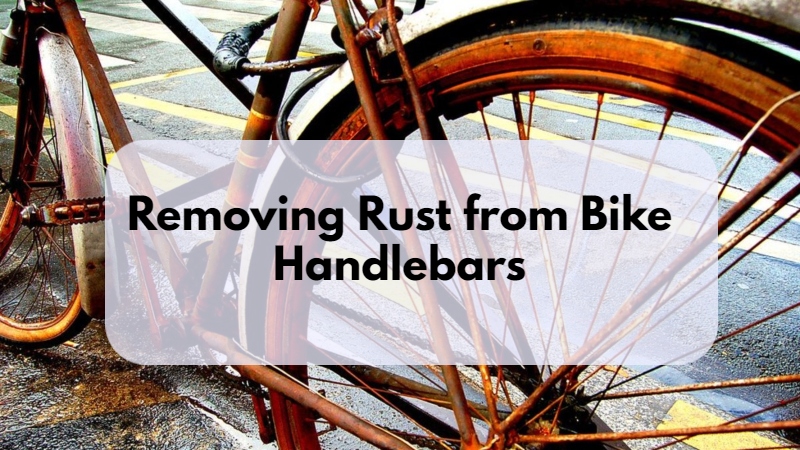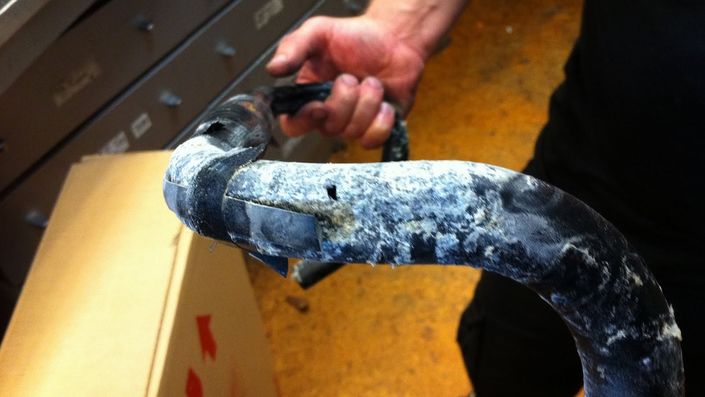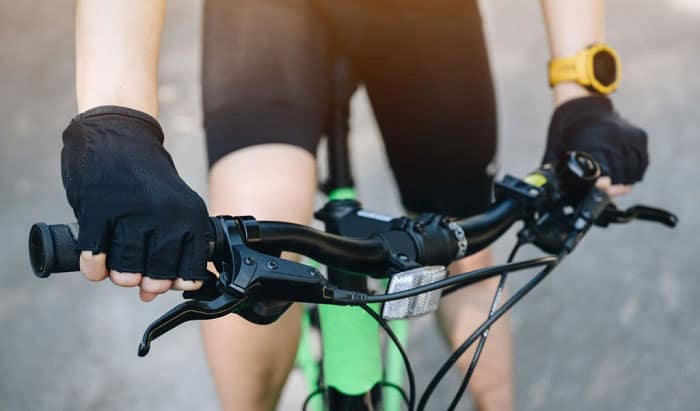Rust, the bane of every cyclist’s existence, often creeps up on our beloved bikes, especially on the handlebars. Living in a damp climate or frequent cycling can exacerbate this issue. Not only does it detract from the aesthetic appeal of your bike, but rust can also compromise the structural integrity of your handlebars, making your rides potentially unsafe.
But fear not! There’s good news for cyclists grappling with this issue. In this comprehensive guide, we’ll delve into the most effective strategies to remove rust from bike handlebars. These methods cater to varying degrees of rust severity and are applicable to different types of handlebars, whether you’re sporting chrome, aluminum, or any other material. So, gear up and let’s embark on this journey to restore your handlebars to their former glory!
Using Baking Soda
Baking soda is not just a kitchen staple but also a mild yet potent cleaning agent, perfect for tackling light rust on bike handlebars. Its mild abrasive nature coupled with its natural rust removal properties makes it a safe and effective choice for all types of handlebars.
Instructions
- Creating the Magic Paste
Begin by mixing equal parts of baking soda and water to create a paste. This mixture should have a consistency that’s easy to apply but not too runny. - Application Process
Using a soft brush or sponge, gently apply the paste onto the rusted areas of your handlebars. The goal is to cover all the rust spots thoroughly. - The Waiting Game
Patience is key here. Let the paste sit for at least 30 minutes. If the rust is particularly stubborn, you might want to leave it on for a bit longer. - Scrubbing Off the Rust
Now it’s time to put in some elbow grease. Scrub the rusted areas with a brush or sponge to lift off the rust along with the paste. The baking soda acts as a mild abrasive, helping to loosen and remove the rust. - Rinse and Dry
Once you’re satisfied with your scrubbing efforts, rinse the handlebars with clean water. Make sure to remove all traces of the baking soda paste. Finally, dry the handlebars thoroughly with a clean towel.
Why Baking Soda?
- Safe for All Handlebar Types: Whether you have chrome, aluminum, or another material, baking soda is gentle enough to use without causing damage.
- Eco-Friendly and Cost-Effective: It’s a natural, non-toxic substance that’s readily available and affordable.
- Ease of Use: This method doesn’t require any special tools or skills, making it accessible for all cyclists.
Using a Commercial Rust Remover
Sometimes, the rust on your bike handlebars can be too tenacious for baking soda to handle. In such cases, a commercial rust remover can be your best bet. These specialized products are formulated to tackle heavier rust, making sure your handlebars are not only clean but also safe for use.
Choosing the Right Rust Remover
Before diving into the application process, it’s super important to select a rust remover that’s compatible with your handlebars’ material. Different compositions can react variably with different metals, so choose wisely to avoid any damage.
Instructions
- Follow the Label
Every commercial rust remover comes with its own set of instructions. It’s vital to read and follow these to the letter for effective and safe rust removal. - Applying the Rust Remover
Using a brush or sponge, apply the rust remover evenly over the rusted areas. Ensure that you’re wearing gloves and working in a well-ventilated area, as these products can sometimes be harsh. - Let It Work Its Magic
Allow the rust remover to sit on the handlebars for the duration specified on the product label. This time allows the chemicals to penetrate and break down the rust. - Scrubbing Time
After the recommended time has elapsed, use a brush or sponge to scrub the treated areas. This action will help lift and remove the rust along with the rust remover. - Rinse and Dry
Finally, rinse the handlebars thoroughly with clean water to remove any residue of the rust remover. Dry the handlebars with a clean towel to prevent any water spots.
Benefits of Using a Commercial Rust Remover:
- Potent Against Heavy Rust: These products are specifically designed to tackle severe rust, making them more effective than home remedies in such cases.
- Time-Efficient: Commercial rust removers often work faster than DIY methods, saving you time and effort.
- Wide Range of Options: There’s a variety of products available, allowing you to choose one that best suits your bike’s needs.









